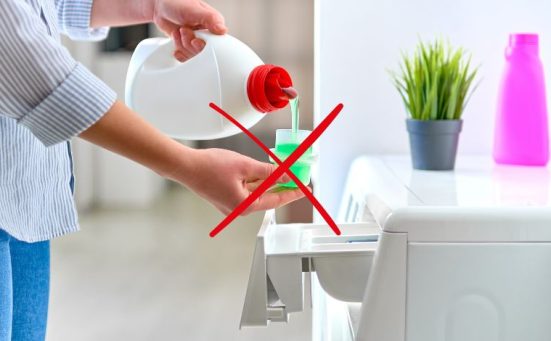
Washing Machine Filter Full Of Water? (here’s what you need to know)
If your washing machine’s filter is full of water it can be worrying, but in most cases it’s easy to fix. If you’ve noticed that your washing machine filter is full of water, keep reading.
In this article we look at the reasons why washing machine filters fill up with water and the best ways to solve this annoying problem.
Are All Washing Machine Filters Full Of Water?
The answer to this question depends on the amount of water that is found in the filter. Around 1 cupful of water escaping the filter when it’s removed is normal and not a problem.
However, if there’s considerably more than 1 cupful it most likely indicates that there’s a blockage which is stopping the water from draining from the appliance correctly.
If there is a blockage the machine will not be able to drain properly which could impact on the draining functionality. This will then hinder the machine’s cleaning ability and could even make the clothes smell damp if they’re left in the drum.
What Causes The Filter On The Washer To Be Full Of Water?

If the filter on your washing machine is full with an excessive amount of water, it’s obviously not normal. Which means there’s another issue that needs to be addressed. There are a few reasons for this which include;
Blocked Filter
The most common cause of the filter being full of water is that the filter itself is blocked. This will prevent water from flowing through the drainage system of the washer.
The filter is generally located on the bottom right hand side at the front of the machine. Typically hidden behind a flap. Simply open the flap to access the filter.
Before removing the filter from its housing, be sure to lay a few towels on the floor and place a shallow tray directly in front of the filter to catch any water trapped in the filter.
You may need to partially open the filter, allow the tray to fill then close the filter while you empty the tray. Repeat this process until the water is all gone.
Once the filter is out, you can inspect it for any foreign objects like coins, hair pins, screws, nails, buttons etc. Then inspect the impeller and make sure that it turns freely.
You should then wash the filter and replace it into the filter housing ensuring it is fitted correctly. Make sure the filter isn’t cross threaded because unless the filter is screwed into the housing correctly it will leak.
Blocked Drain Hose

The drain hose is responsible for allowing all of the waste water to drain from your washer. Sometimes the drain hose can become twisted or kinked which can cause detergent, fabric softener, lint, fluff and other debris to accumulate and prevent the waste water from flowing freely.
The filter is designed to collect all of this debris but that doesn’t mean that more can become clogged in the drain hose. Even if the drain hose isn’t twisted, it can still sometimes become clogged and will need to be cleaned out.
Cleaning The Drain Hose
To clean the drain hose, you’ll need to carefully remove it from the washer. Disconnect the wall end of the drain hose first and place the end into a bucket to collect any water that’s trapped in the machine.
Then disconnect the other end of the drain hose and run hot water through it until it runs freely. If hot water alone isn’t enough to clear the blockage, you can use a commercial drain cleaner or a plumber’s snake to remove any blockages.
There’s a few good commercial drain cleaners on the market, such as HG, Cillit Bang and Mr Muscle.
No products found.
Once the hose is debris free, rinse it with clean water to ensure there are no chemical residues before reconnecting the drain hose to the washer and the drainpipe.
Faulty Or Blocked Drain Pump
When the filter is working properly it should prevent anything from getting into the drain pump. Sometimes though, small pieces can slip through and eventually block the flow of water through the pump.
Accessing the pump entails dismantling the appliance and is something best left to an expert. If the drain hose is clear and the filter is free from debris, and you suspect the drain pump is the cause of the excess water, we recommend contacting a technician to investigate further.
SEE ALSO: How Much Water Do Washing Machines Use? (in the UK)
Frequently Asked Questions
If you don’t empty the filter on your washing machine and run the machine with a clogged filter, you run the risk of your laundry not getting clean. You could find detergent residue, lint etc attached to the laundry after the wash cycle has completed as well as your laundry smelling musty.
You should empty the washing machine filter at least once a month to ensure the smooth running of your washer.
If you own a front loader washing machine, the filter is typically located on the front bottom right hand side behind a flap. If you own a top loader washing machine that was made before 2001the filter is typically located underneath the agitator. Newer top loaders do not have filters and rely on more powerful pumps.
Also, follow us on Pinterest ...



